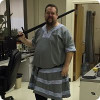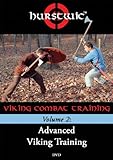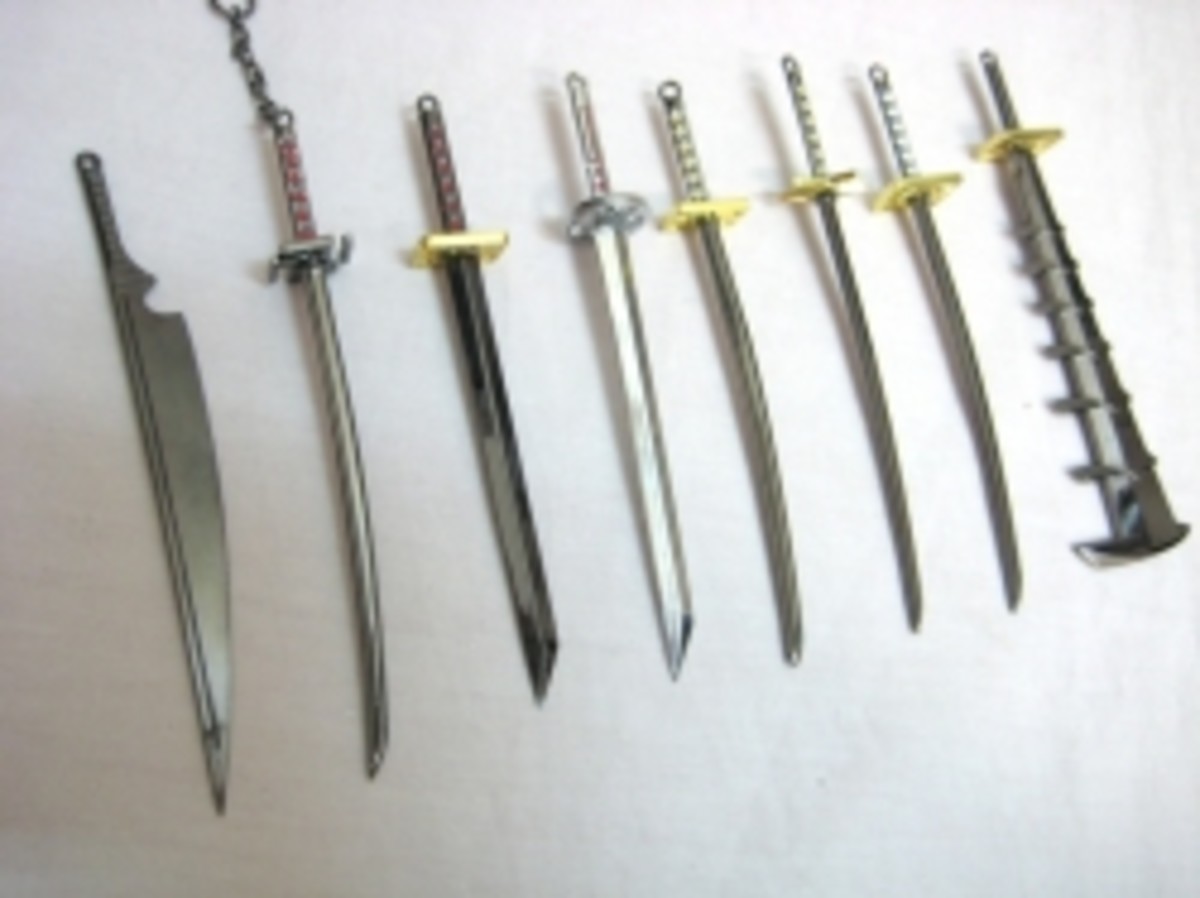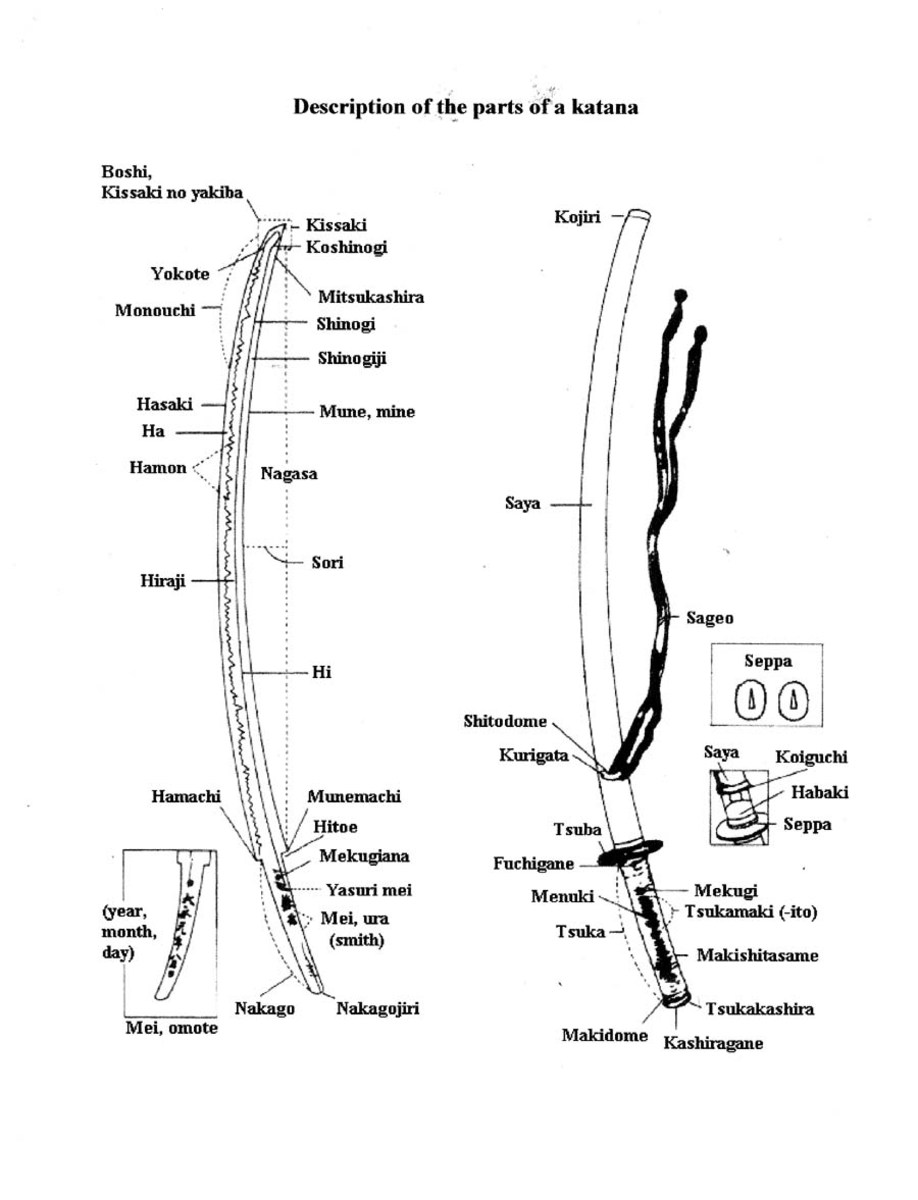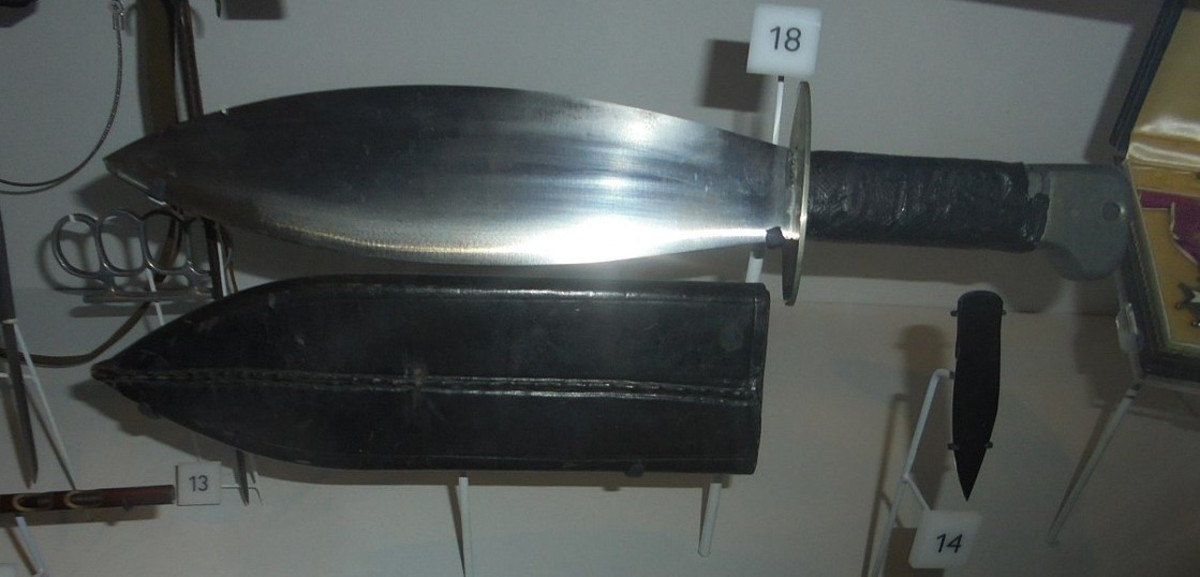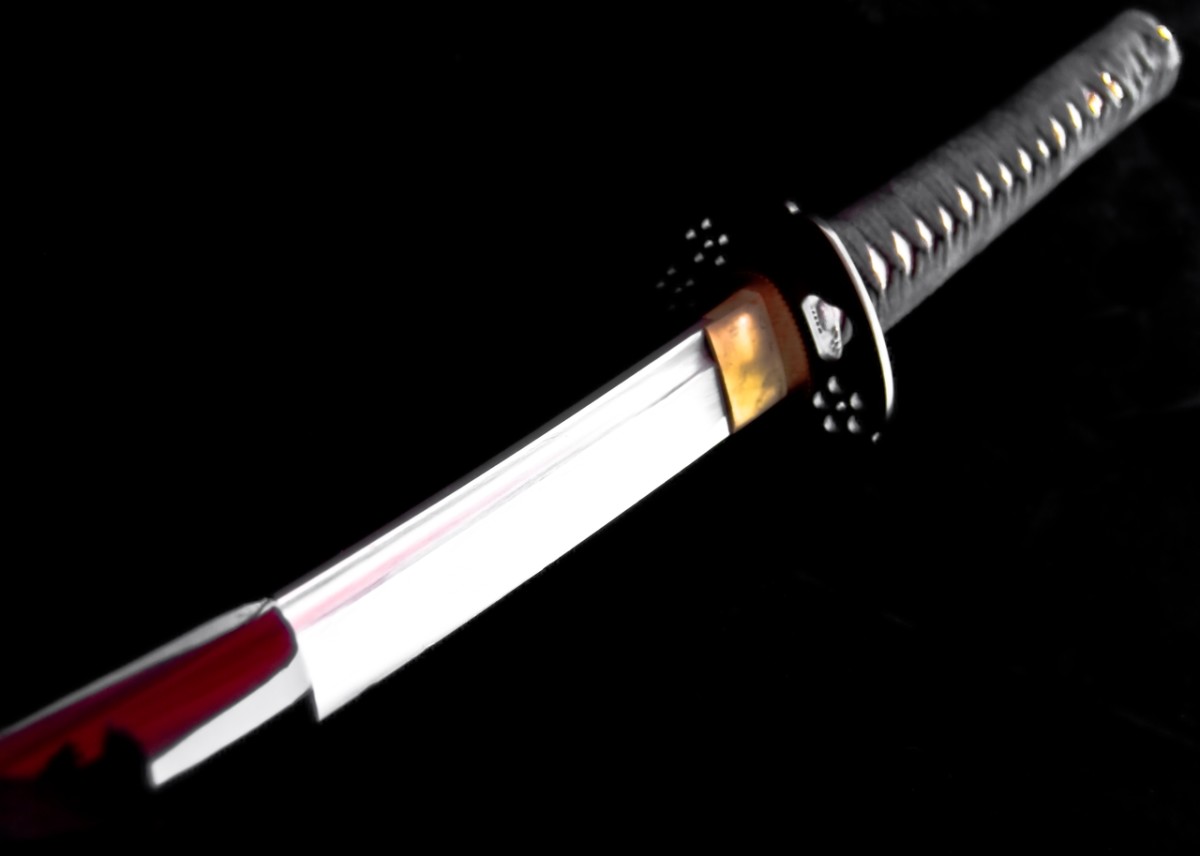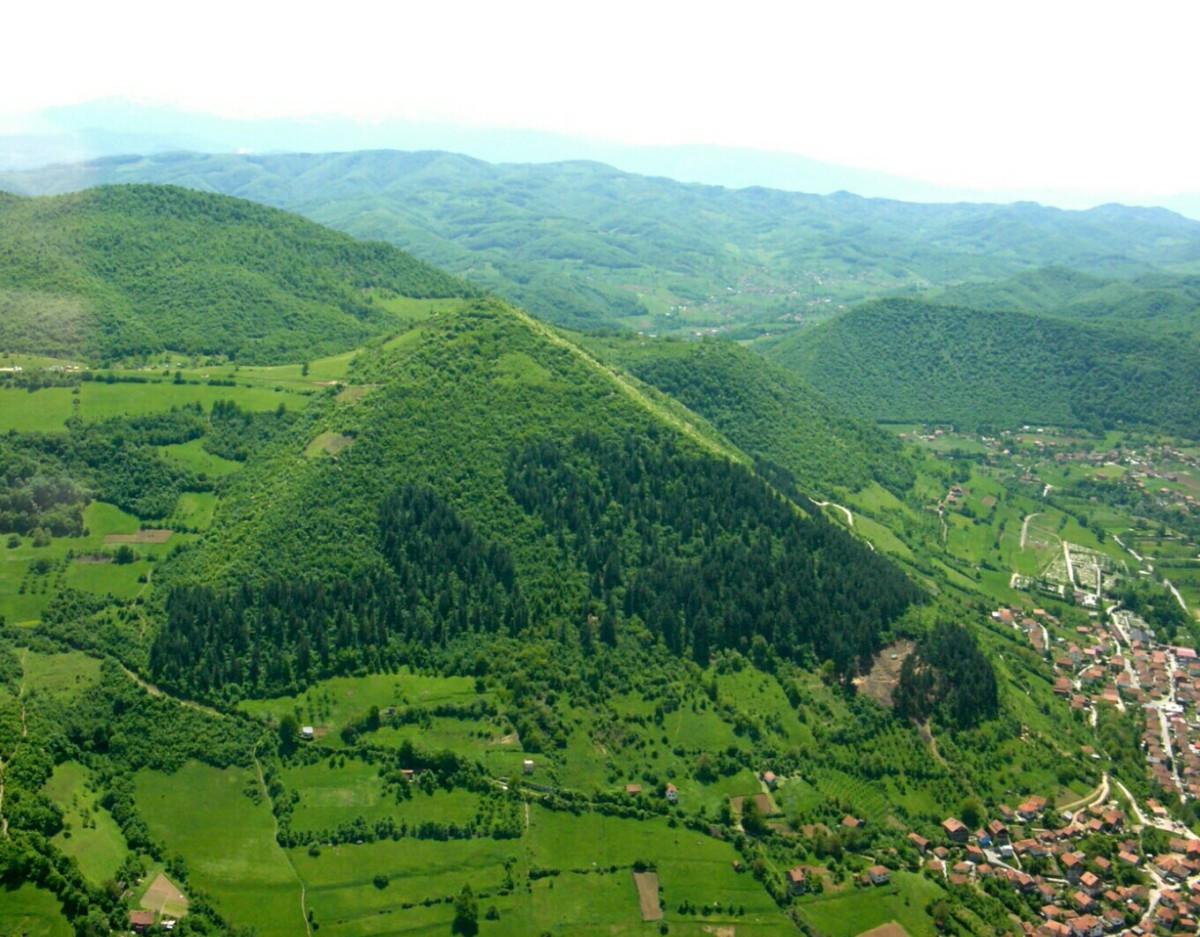Medieval Weaponry - Swords
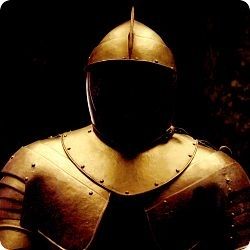
The Noble Sword
Swords are the weapon of the medieval knight, a knights sword was his symbol of authority. Swords are almost mystical throughout the history of warfare. Nobility wouldn't be caught dead using a cudgel in war, let alone a lowly crossbow, a sword held high meant power and authority. Even well into the modern age a sword was a symbol of military might, even now many military forces issue their soldiers swords, usually just for the dress uniform in a symbolic capacity.
The sword, like any other military weapon went through many stages of development, and there is no one design you can point to and say that is what is meant by a sword, a flamberge is just as much a sword as a scimitar or a rapier.
Balancing Act
How to tell if a sword is balanced
A big deal is often made of how well balanced a sword is, and while this is true its not really what most people think. The Point of Balance is the point in which if you balanced it (with the flat of the blade) on your finger it would not tip over. This point will vary depending on length weight and purpose of the sword. The balance generally should be pretty close to the cross guard, but not right at it. The exact distance really is hard to nail down, because not only does it matter what type of sword it is, personal preference comes into play as well. Swinging the sword slowly and carefully to see if it feels natural will help you decide if the sword is well balanced for you.
More important than balance is the pivot point of the blade. To find the pivot point you grip the sword at the top of the grip with your thumb and forefinger with the sword point down. Gently move your hand back and forth so the sword swings freely. You should notice that there is a point on the blade that stays stationary while the sword swings, this is the pivot point. On a thrusting blade this should be as close to the tip as possible, on a cutting blade it should be as close to the centre of percussion as possible.
The Center of Percussion is the point of the blade when struck that causes the least amount of vibration along the sword. This, on a cutting blade, is where you should try to hit your foe with as it will transfer as little vibration down into your hand as possible maintaining control of the blade.
The Longsword - AKA Claymore or Great Sword
Mounted heavy cavalry was an innovation in the medieval era, and the longsword was the sword of choice for a mounted knight. A great two handed sword that the Scott's called the Claymore. This is the sword most people picture when the word sword is bandied about, and is the sword used by William Wallace in "Braveheart". This sword generally required two hands to wield and it was as much a mass weapon as it was a sword.
The word Claymore's root is the gaelic word for great sword, claidheamh mor. The Victorians are responsible for the term Claymore surviving to this day. In most cases by this time the word was translated to English and used just as it was everywhere to mean a two handed sword, the great sword. Victorians however loved all things Scottish, or at least all things they felt were Scottish, and thus romanticized the claymore to be more than it was.
The power in a great sword comes from both its mass and its length, what starts as a short swing ends with quite a bit of speed and force at the tip. The advantage of the great sword was that it kept the enemy far out of striking distance keeping its user safe from harm.
Bastard Sword - Hand and a Half Sword
The Bastard, or hand and a half sword, is somewhere between a standard broad sword, and a longsword. It gave the user the ability to operate it as either a one handed or two handed weapon giving much greater flexibility in fighting styles.
Broadsword - Short Sword
A Broadsword and a short sword aren't technically in the same category, but they are the same basic design. A one handed sword that his broader than a rapier. The roman gladius is a prime example of this category. These are typically one handed weapons, they are generally light, but very strong.
Rapier
Rapier was not a sword of war, but rather a civilian weapon for protection, duels, street fights, and some tournaments. While commonly considered a medieval weapon, it is more accurately a renaissance weapon. The sword is fast and lighter than most other swords.
Flamberge
Flamberge is not actually a separate type of sword but rather defines the shape of the blade. The Flamberge or flame-bladed sword had characteristically wavy edging. They were generally two handed swords, but examples have been found in rapiers and bastard swords as well.
Katana - Samurai Sword
The Katana was the primary sword of choice for the military nobility in Japan known as the Samurai. The main advantage a katana had over other swords was the quick draw nature, since it was worn thrust into a belt with sharp edge facing up it could be drawn and slice an enemy all in the same motion.
Where Else to Buy Quality Swords
The above swords are all from Amazon, if you are looking for the best swords around you may want to shop around. Here are some other sites you can find good swords.
- Zen Warrior Armory
Zen Warrior is the preferred provider of rapiers for the SCA and many fencing organizations. - Dark Sword Armory
One of the most respected sword making companies around. - The Armour Archive
Not just swords, but pretty much anything medieval arms and armour. Great forum for armourers and fans alike.
Wanna Fight! - Where to learn swordcraft
Want to learn how to wield a sword, believe it or not there are many organizations to help you in that noble goal.
- Society for Creative Anachronisms (A.K.A. SCA)
Ok, as a member of the SCA I am a little biased, but if you want to learn combat skills with a sword this is the way to go. There are countless fencing organizations, but they teach the sport of fencing (nothing wrong with that) but not how to fight - Hustwic
Hurstwic focuses on viking time period only, but if you want to learn to fight like a viking this is the group for you. - Canadian Fencing Federation
For those only interested in learning to fence, this is a Canadian organization for fencers. - US Fencing
The American version of the Canadian Fencing Federation.
Hurstwic Videos
Hurstwic specifically focuses on Viking techniques. These videos are excellent quality and are a great idea to get you started in learning swordsmanship.
© 2014 Jeff Johnston
